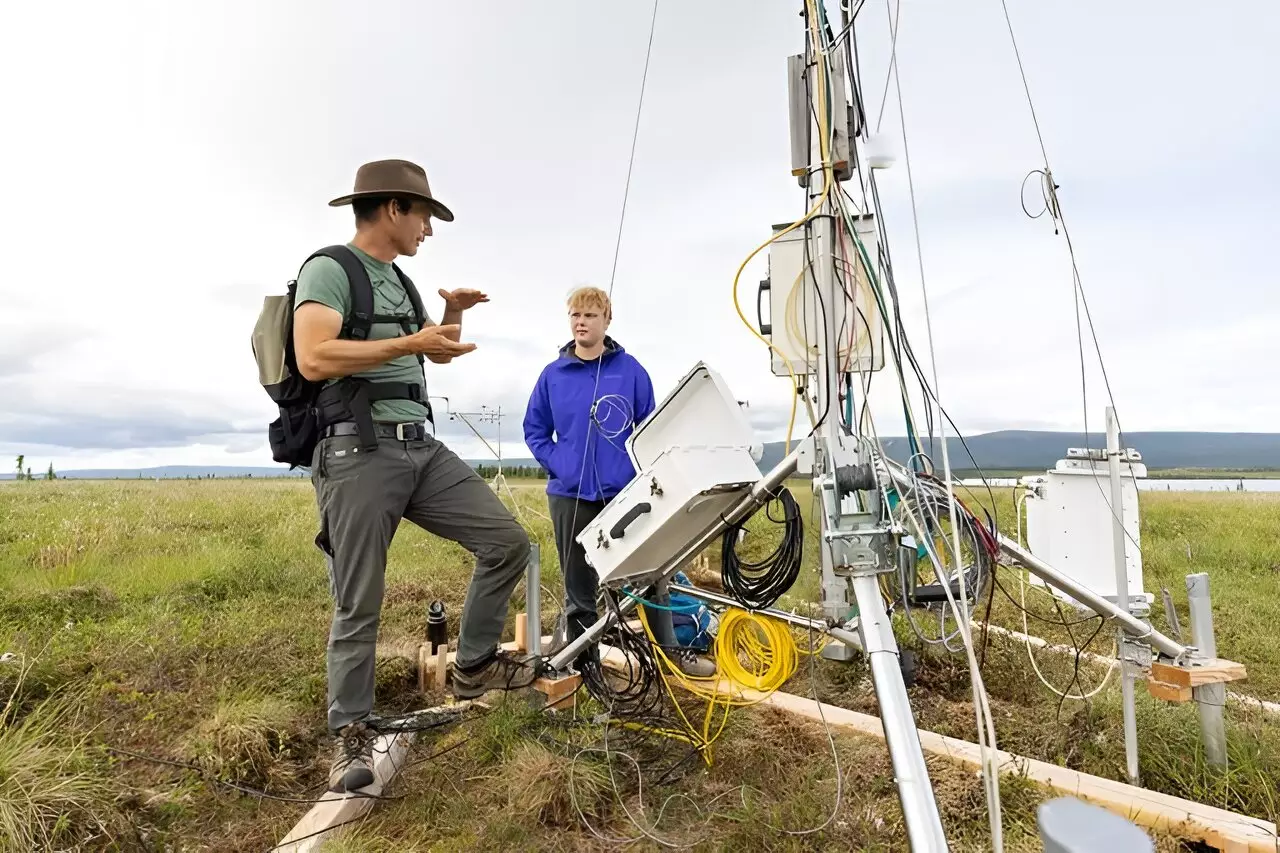As the Earth’s temperature escalates, the Arctic tundra stands at a critical threshold, impacting global carbon dynamics. Notably, three insightful studies led by Ted Schuur, Regents’ professor of biological sciences at Northern Arizona University, alongside a collaborative network of researchers, reveal the profound transformations within these ecosystems. The research emphasizes the Arctic tundra’s role as a substantial carbon reservoir. Although this region constitutes only 15% of the Earth’s soil, it astonishingly harbors about one-third of the planet’s soil organic carbon, presenting an invaluable but precarious safeguard in the ongoing climate change narrative.
The apprehension lies in the alarming rate of change; the Arctic permafrost is warming three to four times faster than the global average. This rapid warming accelerates carbon cycling and ecosystem respiration, causing significant emissions of carbon dioxide and methane, potent greenhouse gases. The research predicts that these emissions could substantially exacerbate climate change, contributing an increase of 10%–20% to global greenhouse gases by the year 2100, akin to the emissions of a major industrialized nation. This reality compels us to reconsider our climate strategies, as current assessments, particularly those under the Paris Agreement, inadequately factor in the implications of thawing permafrost.
Delving into the Data
Schuur and his colleagues have undertaken the imperative task of analyzing extensive datasets from the permafrost regions to unravel the complexities of ecosystem respiration. A remarkable study detailed in *Nature Climate Change* scrutinized decades of carbon dioxide flux data sourced from 70 locations, both permafrost and non-permafrost, coupled with observations bordering 181 ecosystems. The findings illuminated a stark contrast between these systems: while non-permafrost areas exhibited enhanced carbon storage correlated with increased summer growth, permafrost ecosystems demonstrated a concerning trend. The losses incurred in the fall and winter months eclipsed summer gains, indicating a disturbing pivot to their role as carbon sources.
The implications of this shift are alarming; as more carbon escapes into the atmosphere, the feedback loop intensifies. Sue Natali, a senior scientist at Woodwell Climate Research Center and co-author of the study, highlights that the autumn and early winter emissions are showing signs of acceleration, directly linked to rising temperatures and prolonged thaw periods. This foundational understanding of carbon cycling under exigent environmental conditions strengthens the call for urgent climate action.
Experiments Simulating Future Conditions
Adding to the urgency, a second paper published in *Nature* employed miniature greenhouses to simulate warming at 28 tundra sites, offering insight into how future climatic conditions might shape these vital ecosystems. A minor temperature increase of 1.4°C in the air and 0.4°C in the soil was found to trigger a staggering 30% boost in ecosystem respiration. This real-time data provides actionable intelligence about the potential trajectory of carbon emissions from these ecosystems and underscores the role of local environmental factors, such as water and nutrient availability, in shaping carbon dynamics across varying sites.
Schuur’s assertion that these experiments mimic anticipated future environmental shifts in the Arctic provides an essential framework for policymakers, enabling them to understand the consequences of inaction better. The potential course of Arctic ecosystems becoming net carbon emitters is no longer a distant worry but a presenting reality.
The Challenge Ahead: Data Gaps and Geographic Disparities
Despite the crucial advancements in understanding permafrost dynamics, ongoing geopolitical tensions, such as the Russian invasion of Ukraine, pose significant challenges. A study published in *Nature Climate Change* underscores the repercussions of losing access to permafrost sites and the associated data, particularly from Russian territories which contribute significantly to the overall understanding of Arctic carbon flux. The existing Arctic carbon flux monitoring network is now jeopardized, and the absence of Russian data means a drastic reduction in our ability to understand the full spectrum of variability present across permafrost ecosystems.
Researchers have proposed the establishment of new monitoring sites in North America to mitigate some of this data loss. However, the absence of ecosystems unique to Russian permafrost may lead to irrevocable gaps in understanding, complicating global climate models and policies geared towards curbing greenhouse gas emissions.
The interface between climate science and policy is fraught with complexities, and the call to action becomes increasingly urgent. As permafrost regions continue to thaw and release their stored carbon, shaping a sustainable and effective global response to climate change necessitates a comprehensive understanding of these crucial Arctic ecosystems. The time to deepen our commitment and understanding of the Arctic climate crisis has never been more pressing, demanding immediate collective effort for a sustainable future.


Leave a Reply